Basic Diminished 7th Chord Theory
Let's begin by looking at the ingredients that make up a diminished 7th chord.
From the root (1), we have the intervals of a minor 3rd (♭3) and diminished 5th (♭5), together known as a diminished triad.
We then add a diminished 7th interval (♭♭7) making up this four-tone seventh chord.

This crucial diminished 7th interval is confusingly labelled as a double flat 7, which is enharmonic to (the same sound as) a major 6th.
I don't want to get too much into the theory behind why we use a double flat, and you can read up on it. But in short, it's to do with how the intervals of this unique 7th chord are stacked in minor 3rds...

Don't be put off learning about these chords due to theoretical anomalies like "double flat". It's the sound and function of these chords that truly matters, and that's what we're going to explore!
Played by itself, the diminished 7th chord creates a distinctively tense and dramatic sound...
You'll see this chord abbreviated as dim7 (e.g. Cdim7)...
...or with a small circle and 7 - °7 - next to the root letter (e.g. C°7).
Dim7 Chord Symmetry
Before we look at the ways we can use diminished 7th chords in progressions, it's useful to understand their symmetry.
Here I'm playing a C diminished 7 chord with the C root on the 5th string...

If we lay out its intervals across that root string, we can see that each tone is separated by a minor 3rd interval, or 3 frets if you like...

This consecutive sequence of minor 3rds, from root to octave, creates what is known as symmetry.
In practical terms, it means we can move any diminished 7th shape up the neck in minor 3rds and we'll essentially be playing inversions of the same chord...
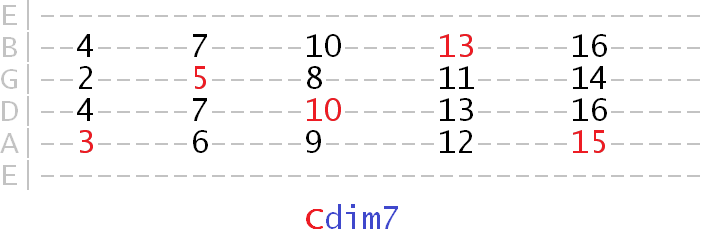
Another example of this starting on E diminished 7, using a shape with the root on the 4th string...

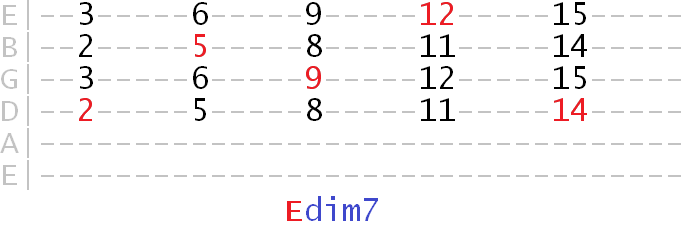
Another example starting on G diminished 7, using a 6th string root shape...

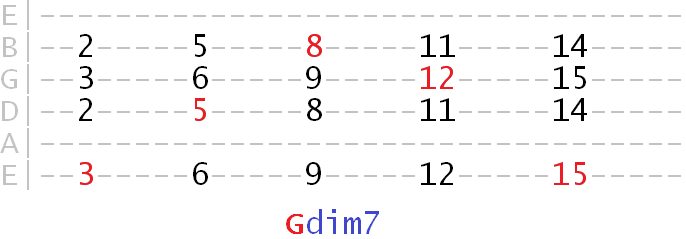
So keep in mind that, in all the examples we'll be looking at, you can position the diminished 7th shape in several positions based on its minor 3rd symmetry, to create different voicings of the same chord.
Diminished 7th Chords In Progressions
Let's now look at how diminished 7th chords can function in our progressions.
Between I and ii
Let's say we were in the key of C major. So C major is our 1 or tonic chord.
If we wanted to move to the 2 (ii) chord, Dm in this key, we might place a diminished 7th chord between these two chords, as a passing chord.
So D♭dim7 would lead up to Dm from our C major tonic...
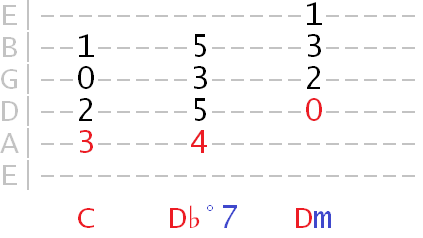
Let's hear this movement within a larger progression...

Using the minor 3rd symmetry concept from earlier, we could also play Edim7 before Dm to get a similar effect...

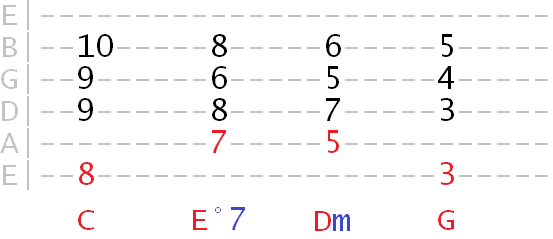
Another example in E major. Note that when I use a " it simply refers to an inversion of the dim7 named just before in the sequence. For example, the inversion of F°7 played below could be seen as A♭°7, or just F°7 again. It's all the same notes!

Between IV and V
The diminished 7th chord also commonly occurs between the 4 and 5 chords in major keys.
For example, in the key of G major, C major would be our 4 chord and D major our 5 chord.
So we could place a C#dim7 chord in between C and D - G / C / C♯dim7 / D
We might climb our way to this chord as follows...
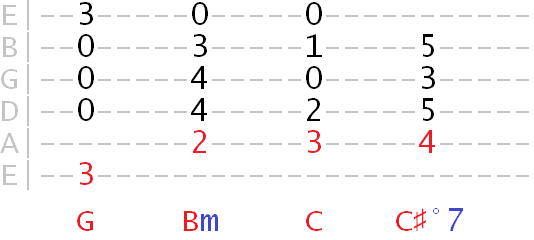
So whenever you find yourself on the 4 chord of a major key, a diminished 7th chord can be seen as one fret up from that.
Filling Whole Step Gaps With dim7
What we've done so far is fill whole step gaps in the natural (diatonic) major key with a diminised 7th chord, between the 1 and 2 and 4 and 5.
And by using the chord's symmetry, the diminished 7th between 4 and 5 also fills the whole step between 2 and 3.
The diminished 7th between 1 and 2 also fills the whole step between 6 and 7.

We'll get to the remaining whole step gap, between 5 and 6, later, as this has its own special function.
In general, one effective way to use diminished 7th chords is to place them between the natural chords of the key.
A common example of this you'll hear, particularly in jazz styles such as bossa nova, is the diminished 7th between the ii and iii.
Here we're in the key of F major, with Gm as the ii chord.
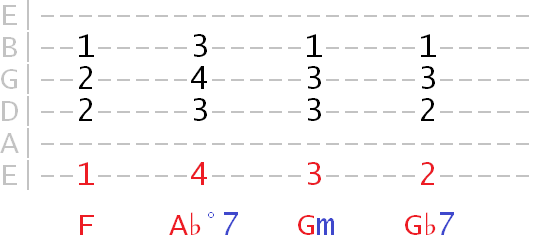
So the diminished 7th chord tends to act as a passing link between chords in a key. Here's an example of taking this concept to its extreme, in the key of B major...
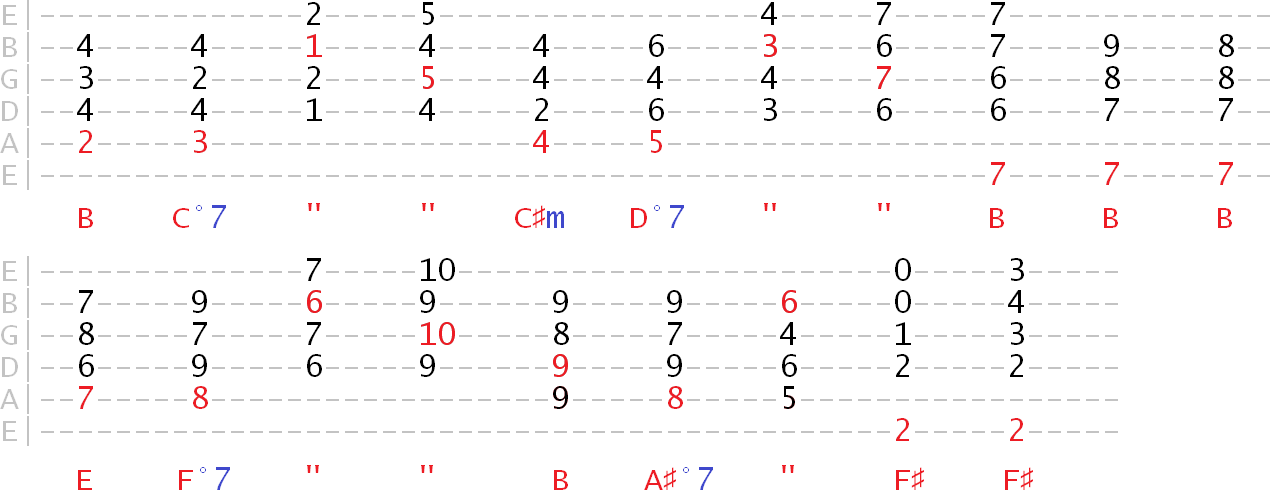
Diminished 7th Dominant Substitute
The diminished 7th chord can also work as a dominant substitute in both major and minor keys.
Take the relationship between 1 and 5 in C major - Cmaj (1) / Gmaj (5)
We could replace that G 5 chord with a diminished 7th chord build on the 7 position. That's simply one fret down from the tonic root...
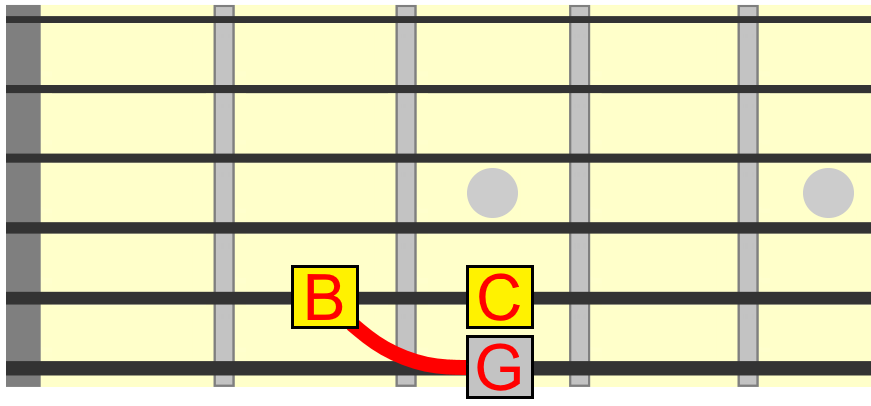
Therefore in C major, Bdim7 would be our dominant substitute.
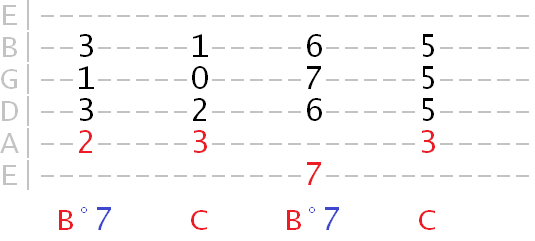
And using the symmetry from earlier, we can again take this form up the neck to relative positions.
For example, on the 4 position of F and beyond. We can hear a tension-resolution effect with the diminished 7th in these positions similar to how the dominant functions.
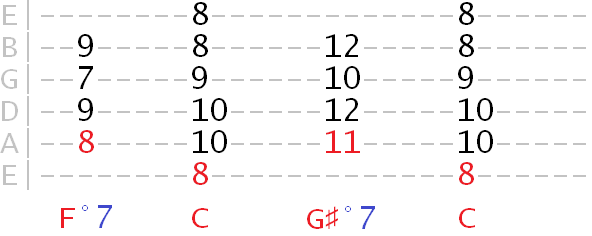
The diminished 7th chord is used in a similar way in minor keys, typically to create more tension over the 5 chord.
In the key of A minor for example, E7 would be our dominant chord, based on the harmonic minor scale.
Now hear what happens when we play a relative diminished 7th chord, Bdim7 in this case, over the E...
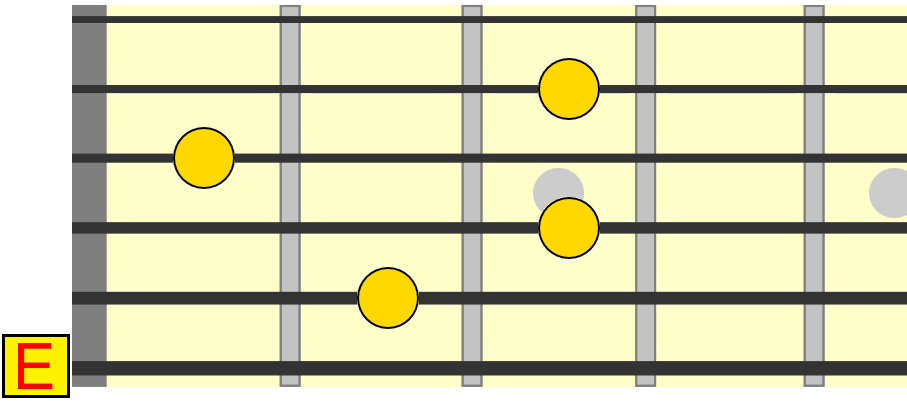
What we've essentially done here by playing the diminished 7th shape over the E is add a minor 2nd interval to the dominant...
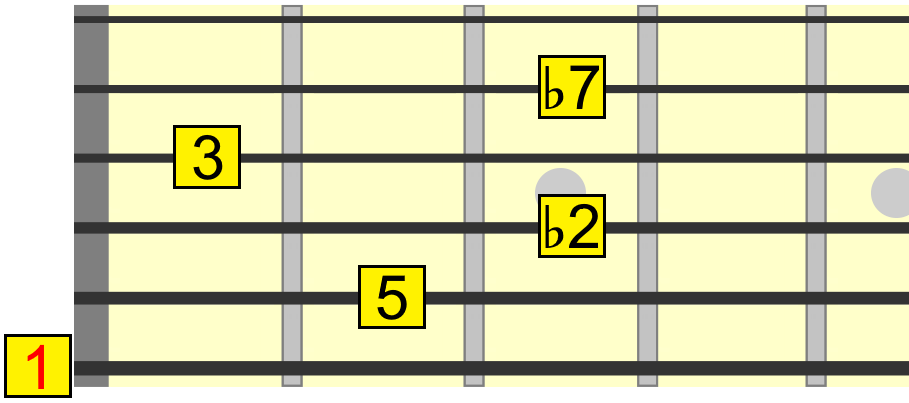
And using the diminished 7th symmetry once again, we can move this tension up the neck as follows...
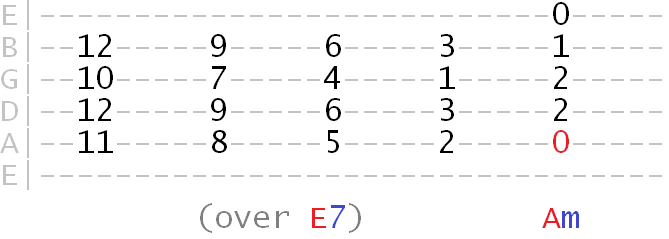
This dim7 dominant substitution fills our final whole step gap, between the V and vi (5 and 6) chords in a key...

So you can see one of these substitute dim7 inversions as existing one fret down from the minor tonic of the key, acting as an alternate dominant of that minor tonic.
Keep experimenting with diminished 7th chords in your own music. You never know what you might discover until you try!
